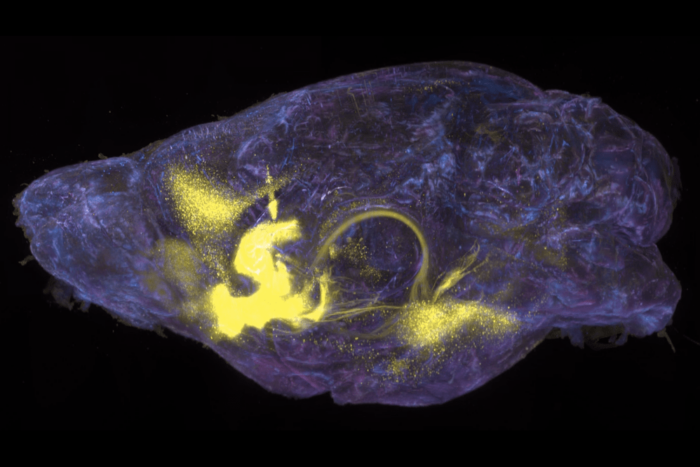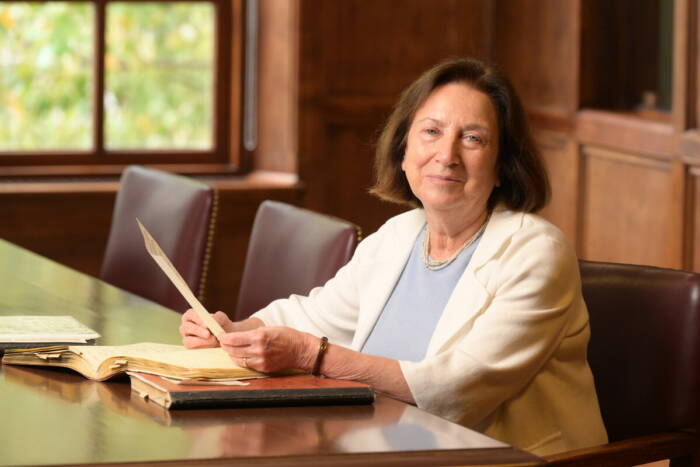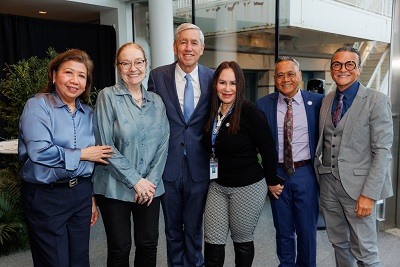Collaborative Research Center installation bridges past and present scientists
In 1926, Clara Lynch brought nine albino mice from Switzerland to Rockefeller’s Smith Hall inside a shoe box. A geneticist, Lynch began breeding the mice and used successive generations, over decades, to show how susceptibility to certain cancers may be inherited from one generation to the next. At the time, scientists knew little about the various causes of cancer, including genetic causes. It was known that some strains of laboratory mice developed tumors spontaneously while others didn’t—but it wasn’t clear why, and results from different labs varied widely. Lynch eventually proved that susceptibility to lung and breast tumors can be inherited, regardless of whether the original tumors were spontaneous or experimentally induced.
Her lab was on the second floor of Smith Hall, in the same space where Luciano Marraffini’s lab is currently exploring the inner workings of the bacterial immune system. Marraffini, working nearly 100 years after Lynch got her start, has himself made transformational discoveries in genetics, showing how the CRISPR-Cas 9 system can be used to edit genes in many types of organisms.
Buildings have histories, and the current occupants of the Collaborative Research Center (CRC) are shaping their legacies in spaces that have witnessed more than a century of scientific innovation. A decade ago, when construction began, the interiors of Smith and its neighboring building, Flexner Hall, were gutted. The majestic limestone and masonry structures that at one time housed two-thirds of the university’s laboratories were given a much-needed facelift. But to create laboratories suitable for modern science, many interior spaces—including the sites of some of Rockefeller’s most notable discoveries—were retrofitted beyond recognition.
This month, in commemoration of the dozens of scientists who occupied Smith and Flexner Halls over the past 100 years, the university’s communications office launched a digital exhibit showcasing the buildings’ rich history of discovery. The installation, known as the Scientist Explorer, is designed to bridge the contemporary building with its history and to allow users to reflect on the accomplishments of past investigators as well as on the cutting-edge work of current researchers located in the CRC. Operated by touch screen, the Scientist Explorer contains short summaries of scientists who led Rockefeller labs in the two buildings. Lynch and Marraffini are just two of the 136 people represented.
Franklin Hoke, associate vice president for communications and public affairs, notes that while the scope of this installation is limited to the CRC complex, it serves to illustrate the scientific excellence and high productivity for which the entire university is known. “It is a place to pause and appreciate the scope and impact of Rockefeller science over the years,” he says.
The Scientist Explorer is available 24 hours a day on the A-level of the CRC.


